At the end of the summer, it’s only logical to start planning how to store your inflatable pool and any floaties you use with it. After all, above-ground pools aren’t made to stand extreme winter weather and are better off tucked away in a cozy storage container over the cold months.
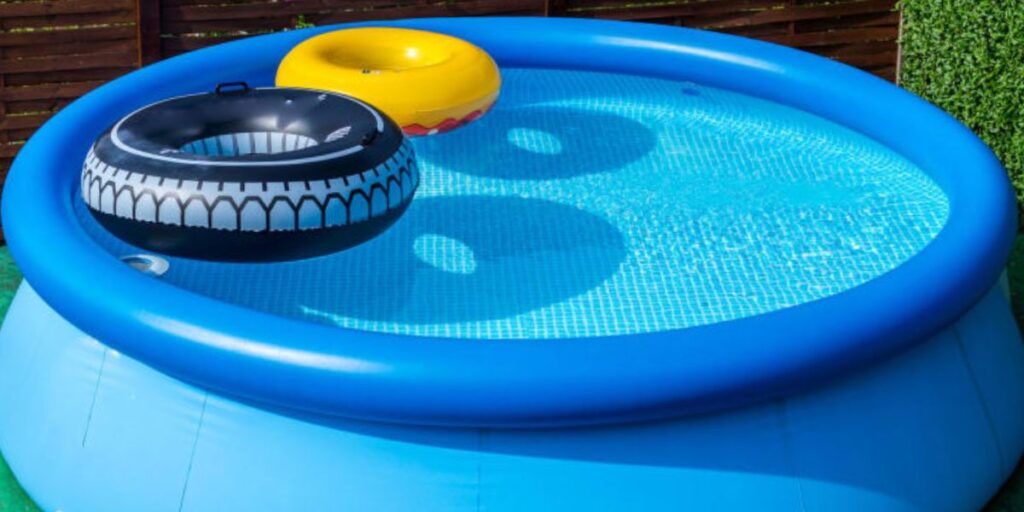
However, as easy as it may sound to just knock the air out, fold the thing, and then put it away, there are some things to consider when storing your inflatable pool.
Steps like cleaning, drying, and even how you fold the pool will make a massive difference in how it holds up till the time you take it out.
So, without further ado, let’s go over the steps of how to store an inflatable pool!
How to Clean, Deflate, and Store an Inflatable Pool in 7 Easy Steps
Above-ground pools are inexpensive and convenient when you don’t have much backyard space. However, they do pose a challenge in how to inflate, deflate, and store them, though. Without enough care in those steps, you could damage the vinyl and render it useless.
That’s why the takedown is such an important part of above-ground pool maintenance. If you rush the process or take any shortcuts, the pool can get punctured and ruined.
So here are seven simple steps you should take to get the pool to survive yet another summer:
1. Check the pH Level
Before you attempt to drain the pool, make sure you do a pH test on the water to ensure its acidity isn’t too low and is safe to dispose of.
If the chlorine content is too high, you can neutralize it with a pool dechlorinator until the pH of the water is between 6.5 and 8.0.
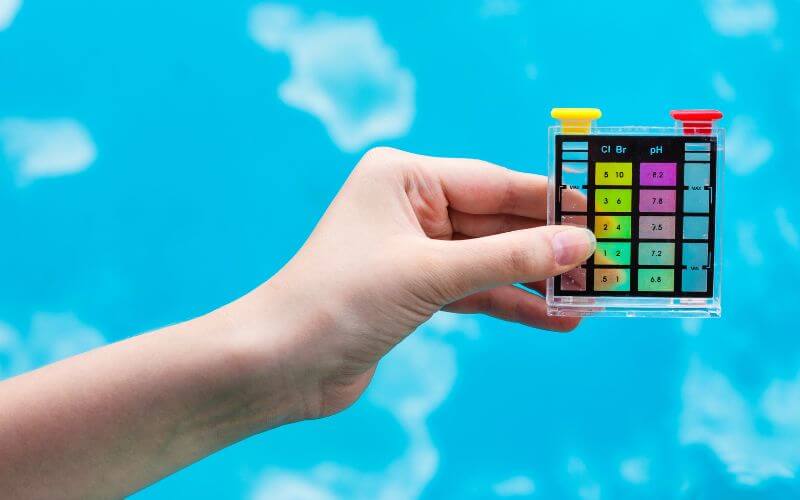
2. Drain the Inflatable Pool Gradually
Draining your inflatable pool is probably one of the most critical steps in the process to ensure your pool remains intact as you put it away. Deflating a filled pool will create a crazy water surge that will probably do more damage than you thought.
The right way to go about it is to locate the drain valve and fit it with a hose adapter. Then, you can connect the adapter with a garden hose to disperse the water throughout your yard.
This will probably take time since you’re relying on gravity to do the work for you and not using any siphoning methods.
You can use a siphon to drain the remainder of the pool water or even a wet/dry vacuum cleaner, but that’s up to you. This process, in total, will take from a couple of hours up to 12 hours, depending on how big your pool is.
Don’t have a hose? Then take a look at these instructions for how to drain an inflatable pool without a hose.
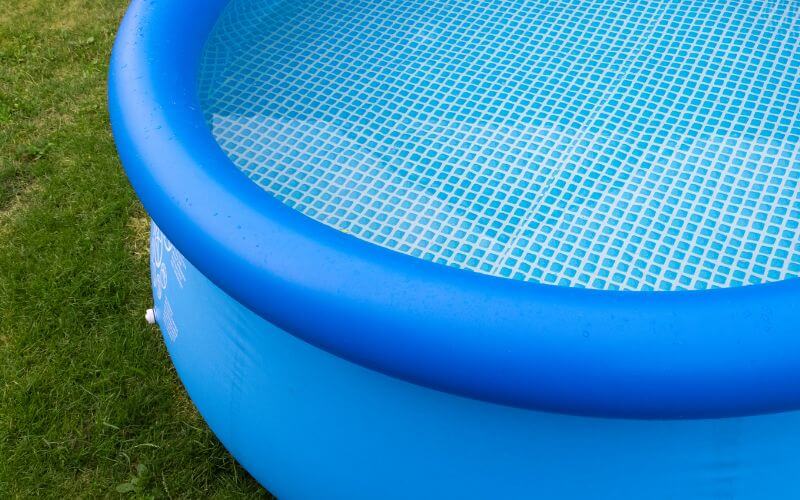
3. Clean the Pool Thoroughly
After you’ve drained the pool, it’s time to inspect for grime or debris left on the walls and floor. Putting away a dirty pool is more than likely to encourage bacterial and fungal growth, and the result won’t be something you’ll want to swim in.
To clean an inflatable pool, you can just use mild dish soap and water, scrubbing away with a soft-bristled brush until the pool is clean. Make sure not to use a rough brush or a harsh detergent that can eat away at the vinyl and erode the pool.
After you’re done sudsing up the pool, wash away any remaining soapy water and drain it thoroughly. Any remaining soap residue can cause the pool liner to stick together when folded, and you wouldn’t want that.
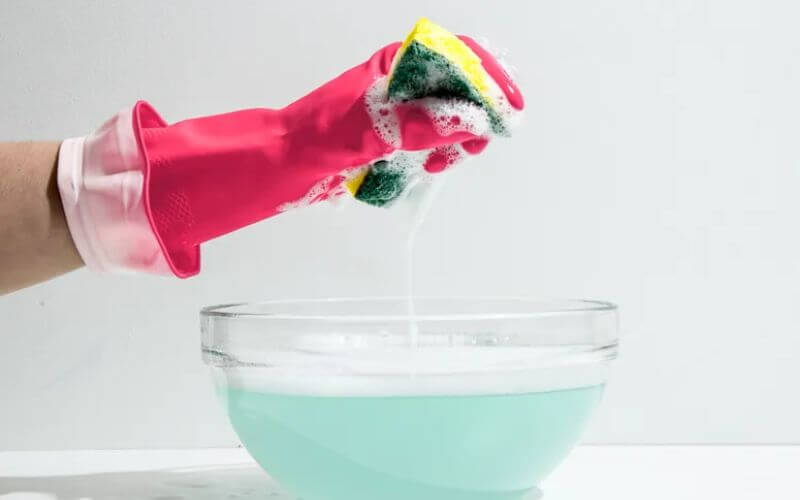
4. Dry the Pool
Leave the pool to dry in the sun for a couple of days, which is a passive step unless you want to expedite it by using a wet/dry vacuum cleaner or a few old towels.
It’s advisable to do most of the drying when the pool is inflated to avoid having nooks and crannies where water might escape. Inflatable pools are notorious for hiding pockets of water that can go undetected for days if you don’t do your due diligence.
If you deflate the pool before drying it, you’ll have to keep turning it around every few hours to expose all surfaces to the sun. Also, ensure you’re getting the bottom of the pool and the tarp it lays on.
Some people will tell you to hang the pool on some ladders or even on monkey bars if you have a jungle gym. However, it’s not a great idea just because of any sharp edges that can puncture holes into the liner. All it takes is one wrong move to ruin the pool completely!
Read more: How To Dry An Inflatable Pool
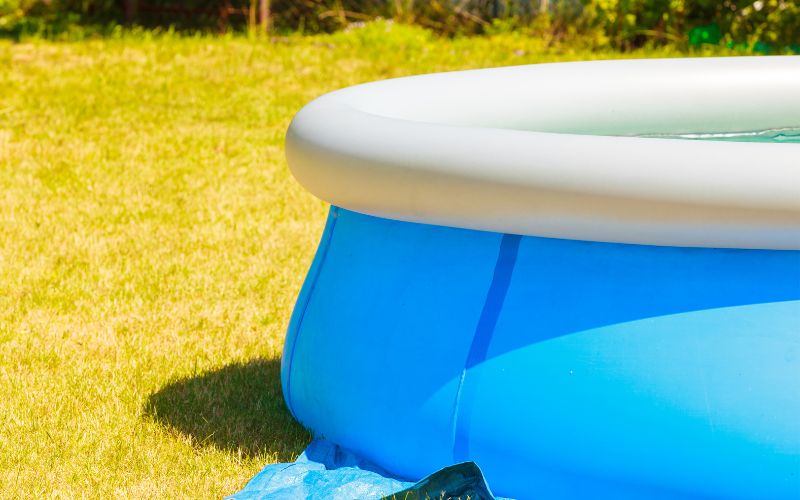
5. Deflate the Pool
Now that the pool is mostly dry, it’s time to deflate it. You can remove the caps and let it deflate naturally, but this usually takes quite a bit of time.
If you want to take that route, make sure you’re opening the larger cap on the stops, not the smaller one.
It’s confusing, but the gist is that pools and large inflatable items are usually fitted with a Boston valve. This is a type of air valve that allows for air to enter through the small opening but not exit through it.
If the air is escaping too slowly for your convenience, you can make the process go a lot faster by fitting the opening with the hose of a vacuum cleaner. Domestic vacuums will work just fine, but a shop vacuum can get the job done in no time.
When you take the pool out of storage, there’s also a neat trick to inflate it using vacuums, even ones that don’t have a blower option. It’s a little gimmicky, but it’ll save you the need to use a compressor and spare the neighbors the noise.
Read more: How to Blow up an Inflatable Pool (With or Without a Pump)

6. Take Some Precautionary Measures
After the pool has been completely deflated, it’s time to fold and store it. To keep the vinyl liner from sticking, you can always sprinkle a generous amount of talcum powder or baby powder. All you need to do is apply it evenly on the sides and floor before you fold it.
If your pool has a metal frame, this is the time to inspect it for any tarnish or rust. Storing the frame with the rust still active will erode it and make it weaker as time goes by.
Use a ball of steel wool or a rust removal solution, and then give it a quick paint job using spray paint to seal the metal.

7. Fold and Store the Pool
Folding should always start from the end opposite the air valves. This will ensure no trapped air and no chance of pressure building up inside the pool when it’s stored.
To fold the pool, bring in the sides to the center. Then, with the help of another person, bend the pool lengthwise in half. Repeat until you’re left with a long strip that you can roll from the side opposite to the air valves, gently pushing any remaining air out.
Store the pool inside a plastic storage bin or a clean trash can with a functioning lid. This step should protect the material from rats or mice gnawing on the vinyl over the winter, cracking in the cold, or anything accidentally poking a hole through it.
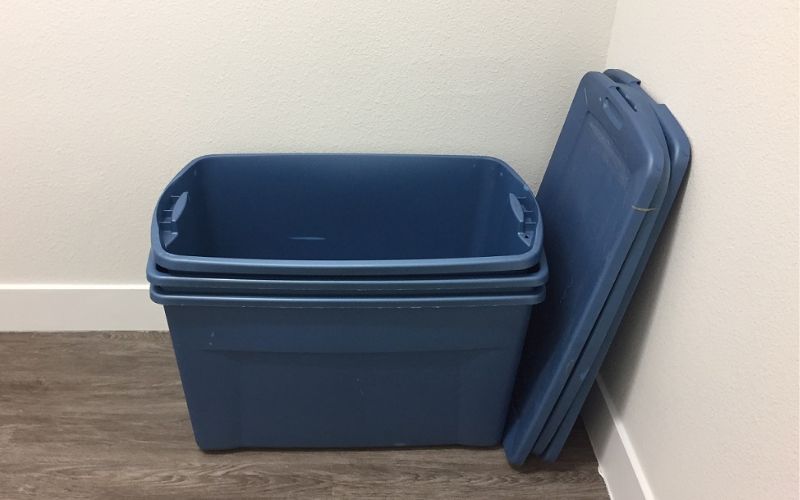
The Bottom Line
Learning how to store an inflatable pool will not only help you manage the pool, but it’ll also guarantee you’ll enjoy it for many summers to come.
It’s all a matter of draining the water safely and gradually using a garden hose or a siphon. After that, you should clear any debris and dry it completely to avoid the growth of bacteria and mildew. You can do this before or after you deflate the pool using a shop vacuum.
Last but not least, folding and storing the inflatable pool is just as important. Keeping it in a dry, relatively warm spot will prevent it from cracking or being chewed on by random critters.
With a bit of care, your little pool will look as good as new the following summer when you take it out!
Frequently Asked Questions
Inflatable pools are safe as long as you stick with the sanitation guidelines, like changing the water often and using a proper disinfectant.
You can change the chlorinated water every two weeks or so. If you keep the inflatable pool with no chlorine, you’ll need to change the water more often. Once every other day might be a good place to start.
The use of chlorine depends on the pool’s size and material. If it’s a small, plastic kiddie pool, you probably won’t be able to gauge how much disinfectant to add to the water to keep it at a safe level.
However, for larger pools, the CDC recommends adding a filtration system and a disinfectant. This chemical agent usually comes in the form of bleach or chlorinating tablets, as well as CYA (Cyanuric acid), which keeps the chlorine in the water for longer.
